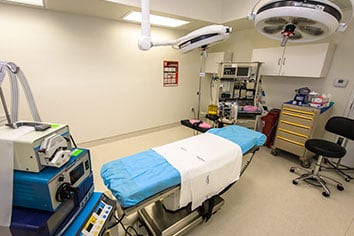Conveniently located to serve the areas of Miami and South Florida
Probably one of the most common aesthetic surgery procedures is Otoplasty.

Everyone is familiar with the cruelty that children inflict upon each other at school and on the playground. People who are born with protruding or enlarged ears often experience extreme amounts of ridicule, which can result in low self-esteem, emotional problems, and more. For people with these conditions, aesthetic correction is often the best solution.
Dr. Silvia Rotemberg assists her patients in finding the most effective surgical procedures to meet their needs. Patients can be assured that her expertise will result in the look they desire for their ears and overall appearance.
One advantageous thing about Otoplasty surgery is that it can be done as soon as the ears are fully developed, which, in most cases, is around the age of 5 or 6. Although it is most commonly performed on children, adults are also candidates for these surgeries.
Ear surgery or Otoplasty, refers to the surgical and non-surgical correction of defects of the external ear or Pinna. Whether caused by blunt trauma or a congenital condition, otoplastic surgeries restore the external ear to its natural proportions by way of restructuring, repositioning and reinforcing the cartilage support framework of the external ear.
Contents
History
Otoplasty dates back to the 5th century BC where an ayurvedic physician, Sushruta, developed this and other surgical techniques and recorded them in his medical journal, the Sushruta samhita. His medical techniques were utilized throughout Asia until the late 18th century when other surgeons began to extrapolate on his work. Johann Friedrich Dieffenback was one such pioneer and his approach to Otoplasty combined two steps. The first was to remove cartilage from the outer ear (Pinna) and the second was to affix it, with sutures, to the membrane at the rear of the patient’s head (mastoid pereostium). In 1920, Harold D. Gillies, advanced the surgery even further by incorporating use of a piece of rib cartilage to reinforce the outer ear structure.
Refinement of Otoplasty surgery has resulted in over 170 different procedures for correcting prominent ears or congenital deformities. All of these fall into one of three surgical categories.
Group I
Surgeries that maintain the structure of the external ear and correct the angle of the outer ear only by means of permanent sutures.
- The Mustarde technique is applied and sutures are inserted at a right angle with a needle. After this, the surgeon can reach a suitable angle for the second suture and thus move the outer ear to an aesthetically optimal position.
- In the 1990s, Michael H. Frich, developed an incision free technique that utilized skin-traversing sutures to re-position the ear.
Group II
Group III
Prominent Ears
This term is used to describe external ears that stick out or are larger that normal head-to-ear measurements. The normal ear position occurs when the external ear is less than 2cm and 25 degrees from the side of the head. When a patient has ears that exceed these measurements, they will appear to protrude from both the front and back views. The common causes of prominent ears exist alone or in combination, which varies from patient to patient. This is why it is of utmost importance for people to undergo a thorough examination and consultation before deciding on the best approach to correcting prominent ears.
Underdeveloped Antihelical Fold
Describes the deformity of the upper third of the external ear.
Prominent Concha
Describes the prominence of the middle third of the external ear. This part can be both excessively deep, at a wide angle or both combined.
Protruding Earlobe
This refers to a prominence of the lower third of the ear or the earlobe.
Despite the fact that most ears are anatomically normal, this is not always the case. Many conditions exist that require reconstructive otoplasty, which can be much more complicated. Some of these abnormalities are listed below.
Constricted Ear
This condition causes the ear to form the shape of a cup due to the unusually small outer rim of the ear.
Cryptotic Ear
The external ear is hidden in the side of the head underneath the skin.
Macrotic Ear
This is an enlarged outer ear that is otherwise normally shaped.
Question Mark Ear
This involves the deformity of the upper pinna resulting in a question mark shape to the ear.
Stahl’s Ear Deformity
This occurs when the pinna has an extra part, which causes the ear to have a pointed elfin shape.
Otoplasty Surgeries
Conchal Alteration
- Suturing: The surgeon decreases the angle of the middle exterior ear using sutures that are then fasten to the head.
- Conchal excision: This procedure involves the removal of a crescent of cartilage from the middle of the exterior ear and a re-attachment to the head.
- Combination: This involves a combination of both of the above procedures.
- Earlobe prominence correction: The skin on the surface of the earlobe is cut, repositioned or pulled closer to the head and sutured.
Procedure
During the most common method of cosmetic ear surgery, a surgeon makes a cut in the back of the ear and removes the skin to see the ear cartilage. The cartilage is then folded to reshape the ear, bringing it closer to the head.
Sometimes the surgeon will cut the cartilage before folding it. Sutures are then put in place to close the wound.
Cosmetic ear surgery is generally performed in the surgeon’s office or an outpatient clinic. Surgeons use local anesthesia, which numbs the area around the ears, but can also use general anesthesia, which will cause a patient to sleep through the entire operation. This procedure usually takes approximately two hours.
Otoplastic Correction Types
Ear Augmentation
For some patients, the Pinna (outer ear) is underdeveloped or absent altogether. In this case, after a thorough consultation, Dr. Silvia Rotemberg would add structure to these areas via cartilage tissue grafts (usually taken from the ear or rib cage).
Ear Pin-Back
This surgery softens the protrusion of the Pinna by way of incision into the back of the ear. Excess skin is removed and re-attached after careful positioning.
Ear Reduction
An overall solution to enlarged ears, this involves the reduction of one or more of the elements of the ear. Incisions are hidden near the front parts of the external ear.
Post-Surgical Recovery
After Dr. Silvia Rotemberg performs the appropriate surgery or surgeries, the patient will be required to wear a non-compressive dressing on the corrected ear(s). During this period, the patient must avoid any excessive pressure upon the ear, in order to prevent pain and swelling. After the dressing is removed, the patient wears a loose headband or a 3 to 6 week period while sleeping. As for the internal sutures, they are permanent and not absorbable by the body. Any incisions, however, are fastened with sutures that are removed by the doctor after they have fully healed.
Alternate Procedures
Taping
This is one of the more traditional ways that surgeons correct protruding ears. The infant’s ears are taped to the sides of the head in order to flatten out the protrusion and re-position the ear.
Physician-Designed Splints
A non-surgical technique involving the use of customized splints made of various materials. This procedure has been used to correct deformed infantile ears without the need for invasive surgeries.
Consult with Dr. Silvia Rotemberg
Dr. Silvia Rotemberg is a leading plastic surgeon operating in the city of Miami. Her technique incorporates the latest surgical advancements, combined with a vast knowledge of the foundations of plastic surgery. Whether you find yourself a candidate for Otoplasty or other surgeries, Dr. Silvia Rotemberg will provide a comprehensive evaluation of your goals and develop a unique treatment approach. The end result will be a more confident and youthful version of you. To schedule a consult or for additional information, call (305) 539-7083











